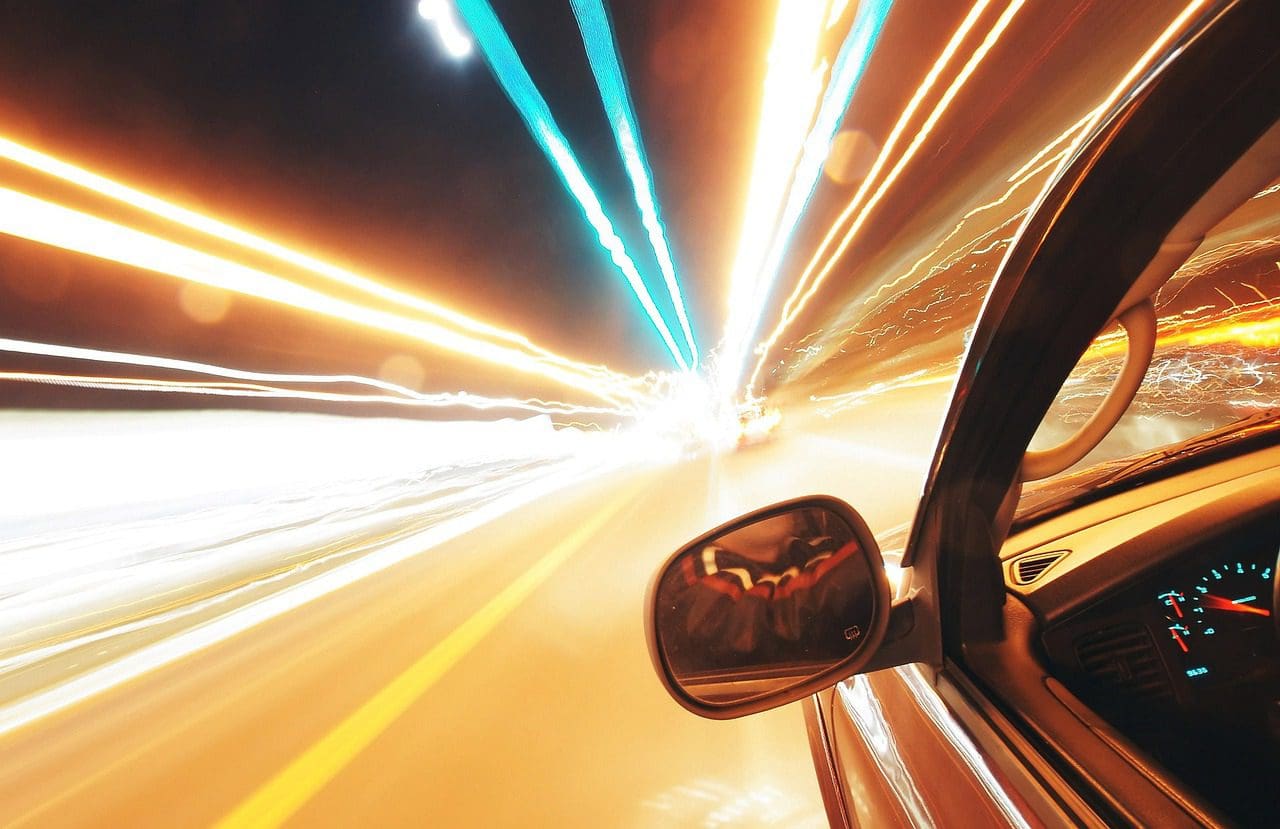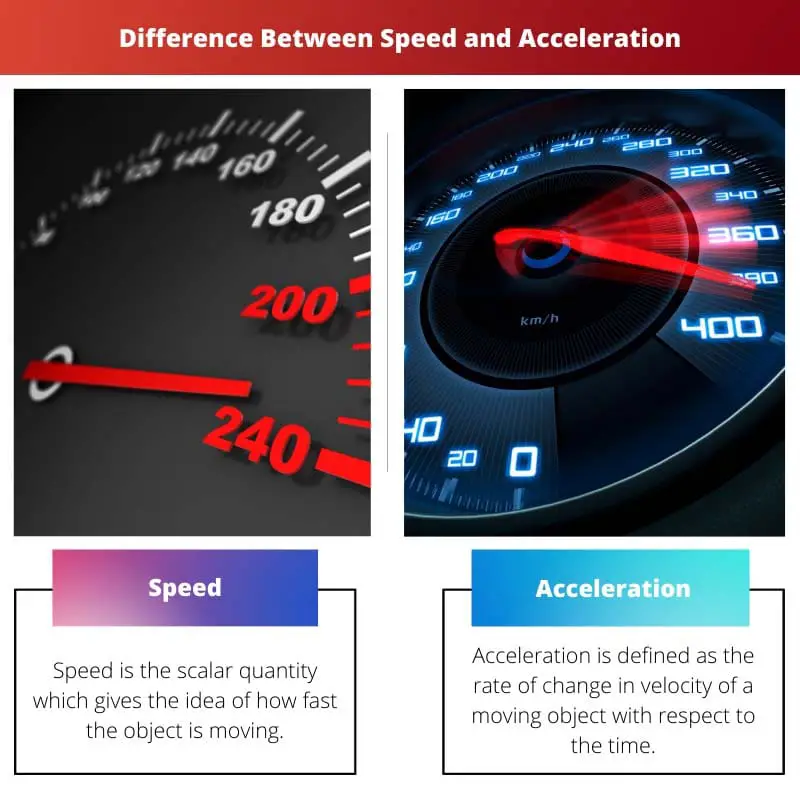Every object or person is movable to some extent, although exceptions are always there. The movements might seem obvious, but they have science behind it.
A branch of science, physics, plays an important role in understanding the movements of objects or people.
For example, acceleration can probably be seen in cars in daily life. Still, the meaning of acceleration is different in physics, which is more technical in giving the reasons behind them.
A few terms are used interchangeably in regular life, but they are different in technical terms; for example, acceleration, speed, race, or velocity, etc., resemble each other in regular life but in technical terms, they are different.
Key Takeaways
- Speed is a scalar quantity that measures the rate at which an object covers distance, expressed as distance per unit of time (e.g., miles per hour or meters per second).
- Acceleration is a vector quantity that measures the rate of change in an object’s velocity, expressed as the change in velocity per unit of time (e.g., meters per second squared).
- The main distinction between speed and acceleration is that speed represents the rate of distance covered, while acceleration represents the rate at which an object’s velocity changes over time.
Speed vs. Acceleration
Speed is a scalar quantity that measures the rate at which an object moves but does not provide direction. Acceleration is a vector quantity that measures the rate at which an object’s velocity changes. An object can accelerate if its speed increases, decreases, or changes direction.

Comparison Table
| Parameters of comparison | Speed | Acceleration |
|---|---|---|
| Quantity type | Scalar quantity | Vector quantity |
| Types | Uniform, variable, average, and instantaneous speed | Uniform, non- uniform, and average acceleration |
| Factors determining | Distance and time | Velocity and time |
| Relation with motion | Rate of motion | Direction and rate of motion |
What is Speed?
Speed is the scalar quantity that gives the idea of how fast the object is moving; in more technical terms, speed is the magnitude of change in the position of a moving object. Speed has a unit, that is, cm.s (CGS system) and m.s (SI system)
Speed is of four types, those are;
- Uniform speed: when the object covers an equal distance in an equal interval of time is said to have a uniform speed.
- Variable speed: when the object covers different distances in equal intervals, the object is said in variable speed.
- Average speed: it can be defined as the uniform speed given by the ratio of the total distance traveled by an object to the total time taken by the object.
- Instantaneous speed: when the speed of an object is variable, then the speed of that object at any instant is said to be instantaneous speed.
Speed is determined by two factors: distance and time. The formula of speed is
S = D / T
- S – Speed
- D – Distance covered
- T – Time is taken
Speed is measured by distance-time graph for better understanding. A speedometer measures speed in vehicles, whereas the odometer covers the distance. Seed can fluctuate depending upon the person in the case of vehicles driven.
Some examples of speed are; a car being driven at 60 km per hour, a cheetah running at 130 km per hour, the speed of writing of a person, like writing one page in ten minutes is considered as writing speed of a person, etc.

What is Acceleration?
Acceleration is the rate of change in velocity of a moving object concerning time. Acceleration is said to be a vector quantity. The unit of acceleration is m/s.
Acceleration is of three types, those are;
- Uniform acceleration is the type of acceleration in which the velocity is uniform with the change in time. This is possible in the case of circular motions.
- Non-uniform acceleration is the type of acceleration in which velocity changes over time.
- Average acceleration is the type of acceleration in which the total change in velocity in a given interval is divided by the total time taken for the change.
Acceleration is determined by a few factors those are; change in velocity and time, and it can be measured with the help of a formula, which is –
Acceleration = (final velocity)- (initial velocity) / time
Acceleration is explained with the help of graphs better. It is confused with velocity or speed, but it differs from both.
Some examples of acceleration are; when the car is speed, or when the car is slow down, or the car taking a turn, falling from a bridge, climbing the bridge, fruits falling from a tree, or any object moving in north, south, west, or east direction, etc.

Main Differences Between Speed and Acceleration
- Speed is the distance covered in the unit of time, whereas acceleration is the rate of change in the speed.
- Speed is the scalar quantity. On the contrary, acceleration is the vector quantity.
- Speed is determined by distance and time, whereas velocity and time determine acceleration.
- Speed can remain constant in every case, but acceleration is not uniform except for circular motion.
- Speed is related to the rate of motion only, whereas acceleration is related to the direction and rate of motion.
- Speed is calculated with displacement, whereas acceleration is calculated with velocity.

- https://e-space.mmu.ac.uk/3518/1/williams%20-%20specificity%20of%20acceleration.pdf
- https://ascelibrary.org/doi/abs/10.1061/(ASCE)0733-947X(2002)128:2(182)